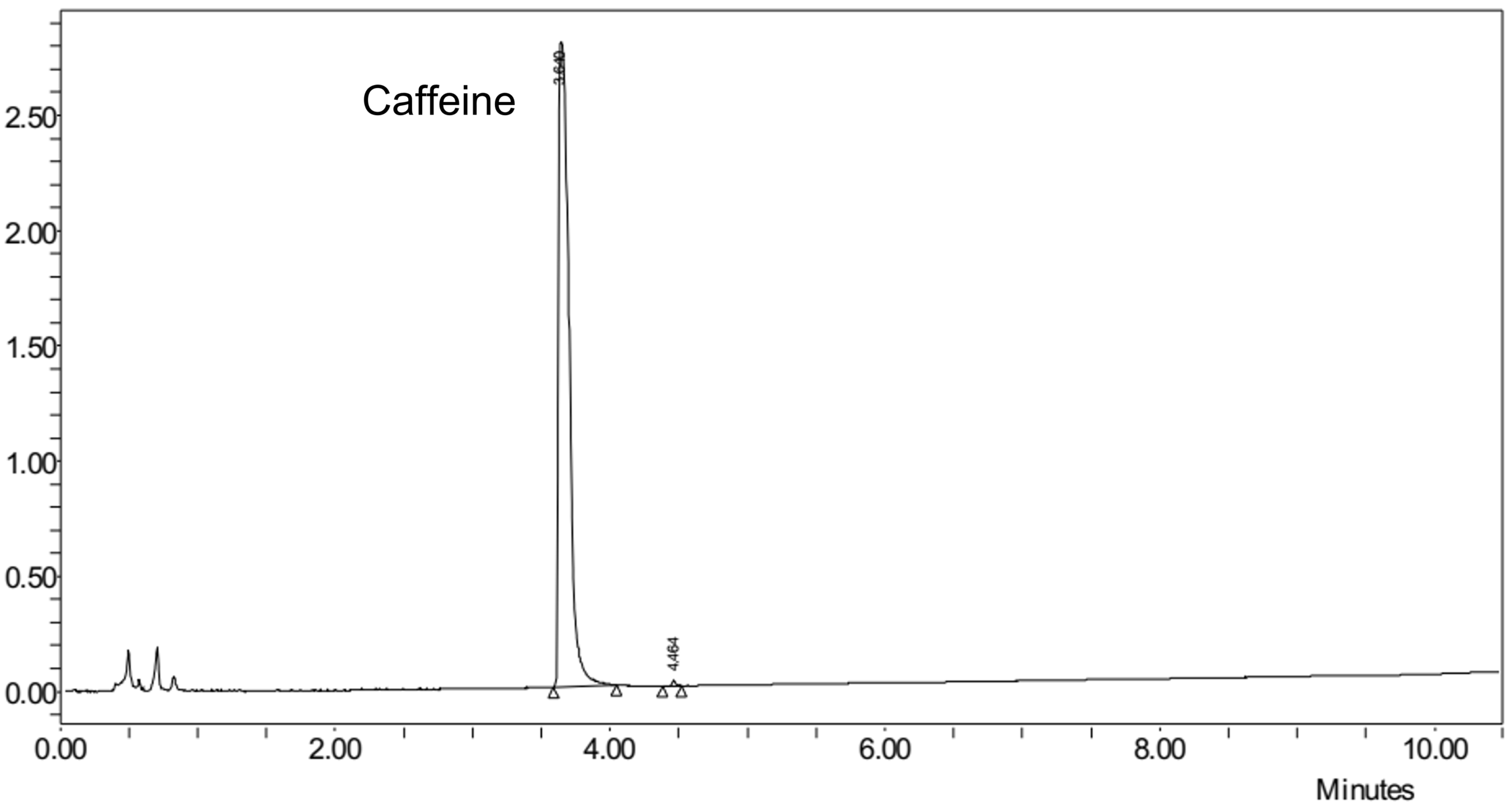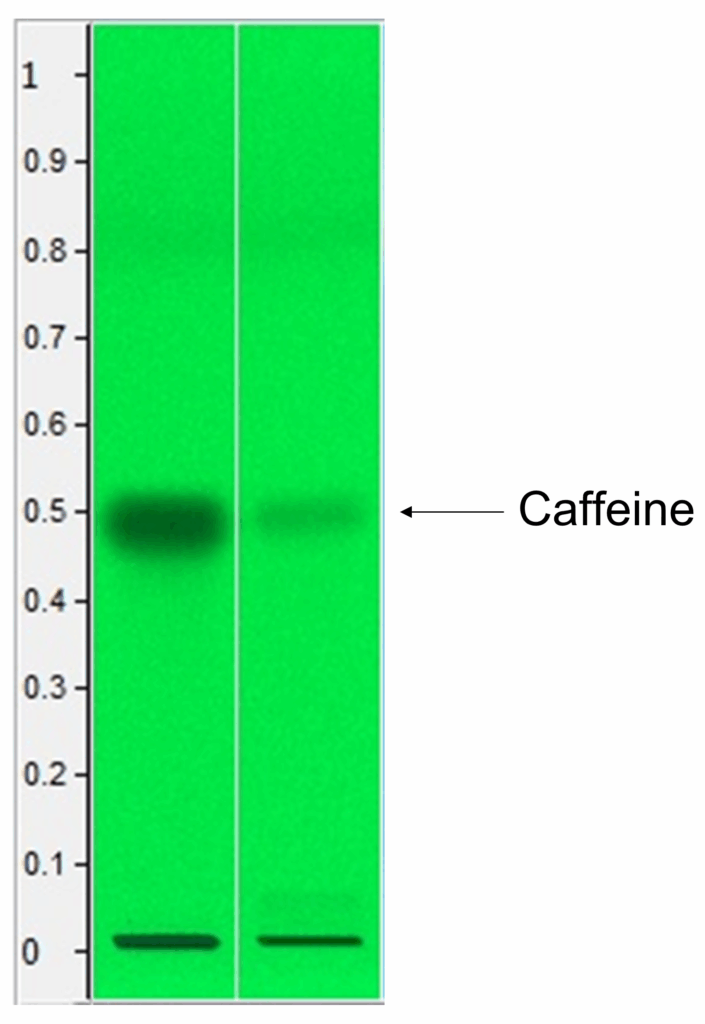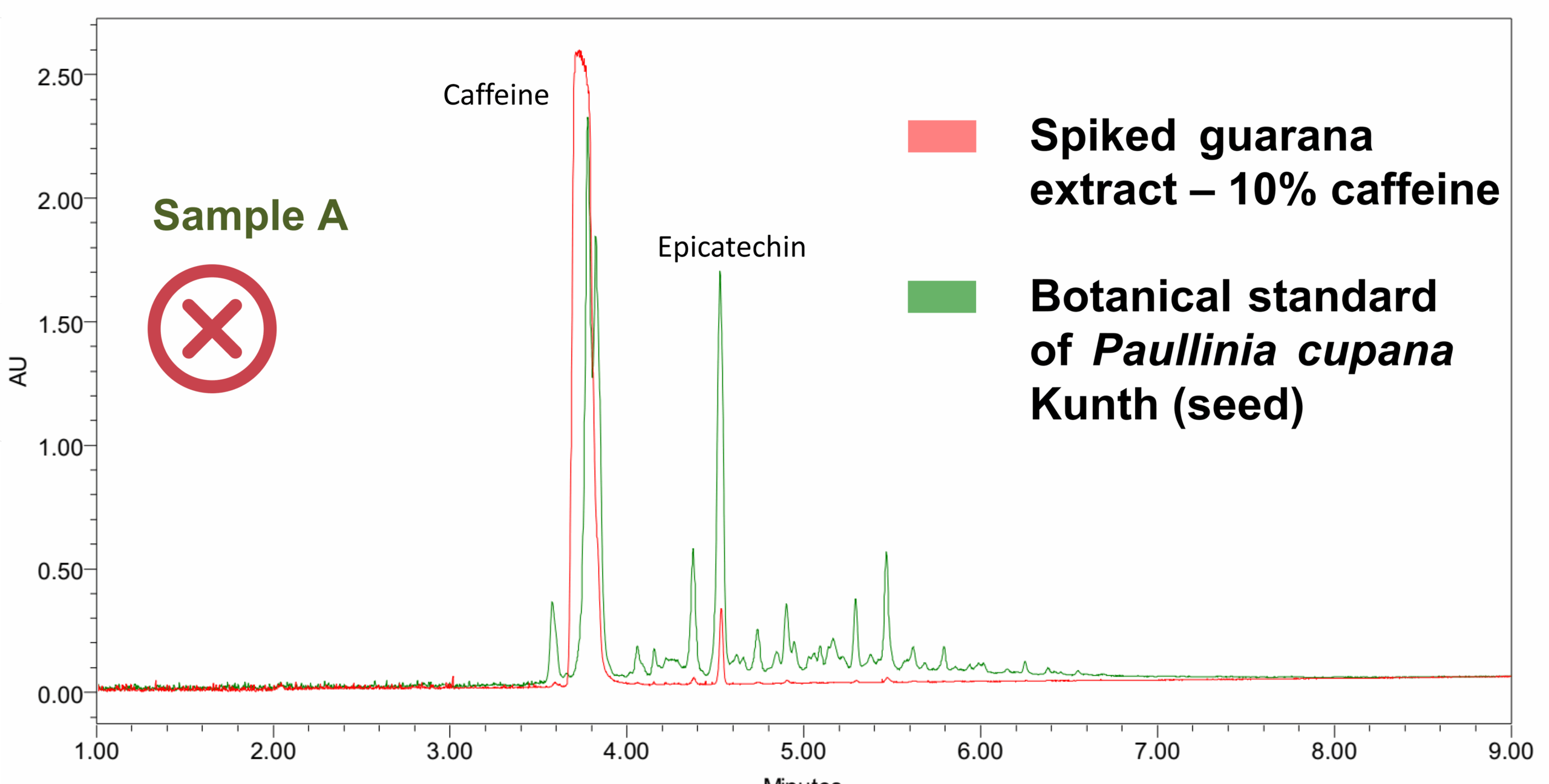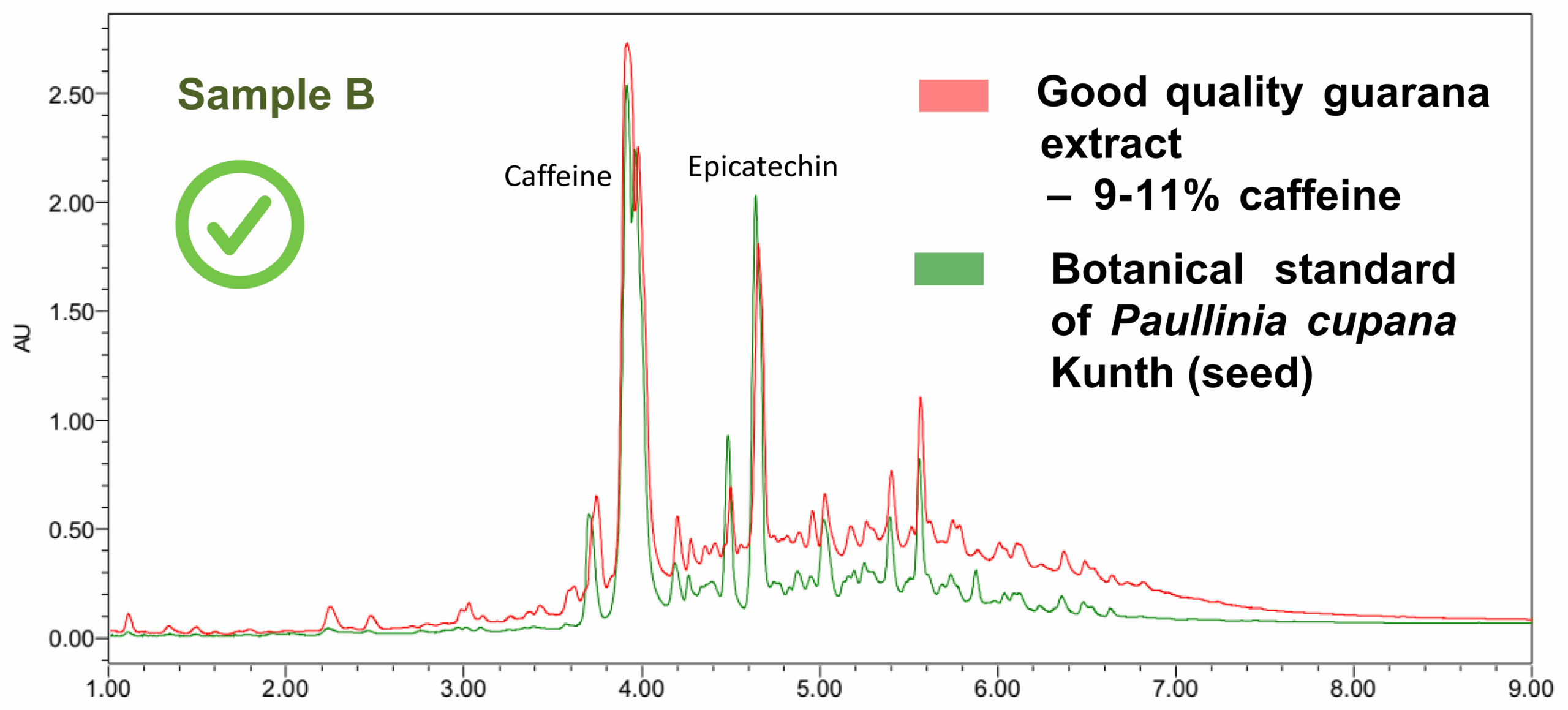Originally from the Amazon, Guarana is best known for its high caffeine content. Its seeds contain one of the highest natural concentrations of caffeine. This characteristic makes the species particularly interesting worldwide, having first been traditionally used in beverage form.
Properties of guarana
Today, Guarana is recognised for its stimulating effects, mainly due to its high caffeine content. It is also known to enhance concentration and memory, and has antibacterial and antifungal properties which are linked to the presence of condensed tannins and certain well-known monomers such as catechin and epicatechin.
Fraudulent caffeine enrichment
However, as is often the case when commercial use is widespread and significant financial stakes are involved, fraud can occur. This is true for this species, whose dry seed extracts are frequently enriched with caffeine (either synthetic or natural) without any disclosure of such enrichment.
Chemical composition of caffeine-enriched guarana dry extract
Guarana dry extracts are very often significantly enriched with caffeine, resulting in a chemical composition where only caffeine is present (Figure 1). However, Guarana seeds naturally contain more than just caffeine. It is therefore obvious that a caffeine-enriched Guarana dry extract will not display the traditional action typically associated with Guarana. The benefits provided will be solely based on the presence of caffeine. In such cases, it should no longer be referred to as Guarana dry extract, but rather as caffeine on a carrier such as maltodextrin.

Inability to differentiate between guarana dry extract and caffeine on a carrier using traditional analytical methods
Moreover, to carry out quality controls on dry extracts, laboratories often rely on the detection of caffeine using methods such as TLC or HPTLC analysis (Figure 2). Since these analyses focus solely on detecting caffeine, it is easy to understand that such tests will never be able to distinguish between a high-quality Guarana dry extract and a sample containing only caffeine on a carrier. This is because compounds other than caffeine will not be detected.

Detecting caffeine enrichment in guarana
But what methods can be used to detect caffeine enrichment?
Isotope ratio mass spectometry: a limited technique
One technique known for addressing this type of issue is IRMS (Isotope Ratio Mass Spectrometry), which measures the relative abundance of different isotopes of a given chemical element in a sample (13C). Isotopic ratios differentiate between a synthetically produced molecule and a naturally occurring one. The drawback of this method is that while it can detect fraud when a sample contains only synthetic caffeine, it becomes much more difficult to interpret the results when smaller amounts of synthetic caffeine are added. The complexity increases even further if natural caffeine has been added.
BotaniCERT’s comprehensive monitoring: proving the quality and authenticity of guarana
At BotaniCERT, we believe that if caffeine (natural or synthetic) has been added, the ratio between caffeine and the minority compounds will change. Therefore, a database is necessary to determine when it can be unequivocally considered as an enrichment.
Client sample analysis: how to prove guarana compliance
Out of 58 samples analysed during a campaign, 36 samples were identified as being significantly enriched with caffeine, representing 62% non-compliance (Sample A).

It might be easy to assume that highly concentrated in caffeine dry extracts show a decrease in the concentration of minority compounds in favour of caffeine. However, many dry extracts standardised to 10% exist and present a perfectly expected chemical composition (Sample B). Therefore, high-quality samples do exist.

Carrying out an inadequate inspection (based solely on criteria such as caffeine) can prove to be far more detrimental than not conducting any controls at all, as frauds are often subtle and difficult to detect.
How can you ensure the quality of your guarana samples?
By proving its presence, the absence of other plant species, the absence of caffeine enrichment, and verifying the quantity of claimed active ingredients.